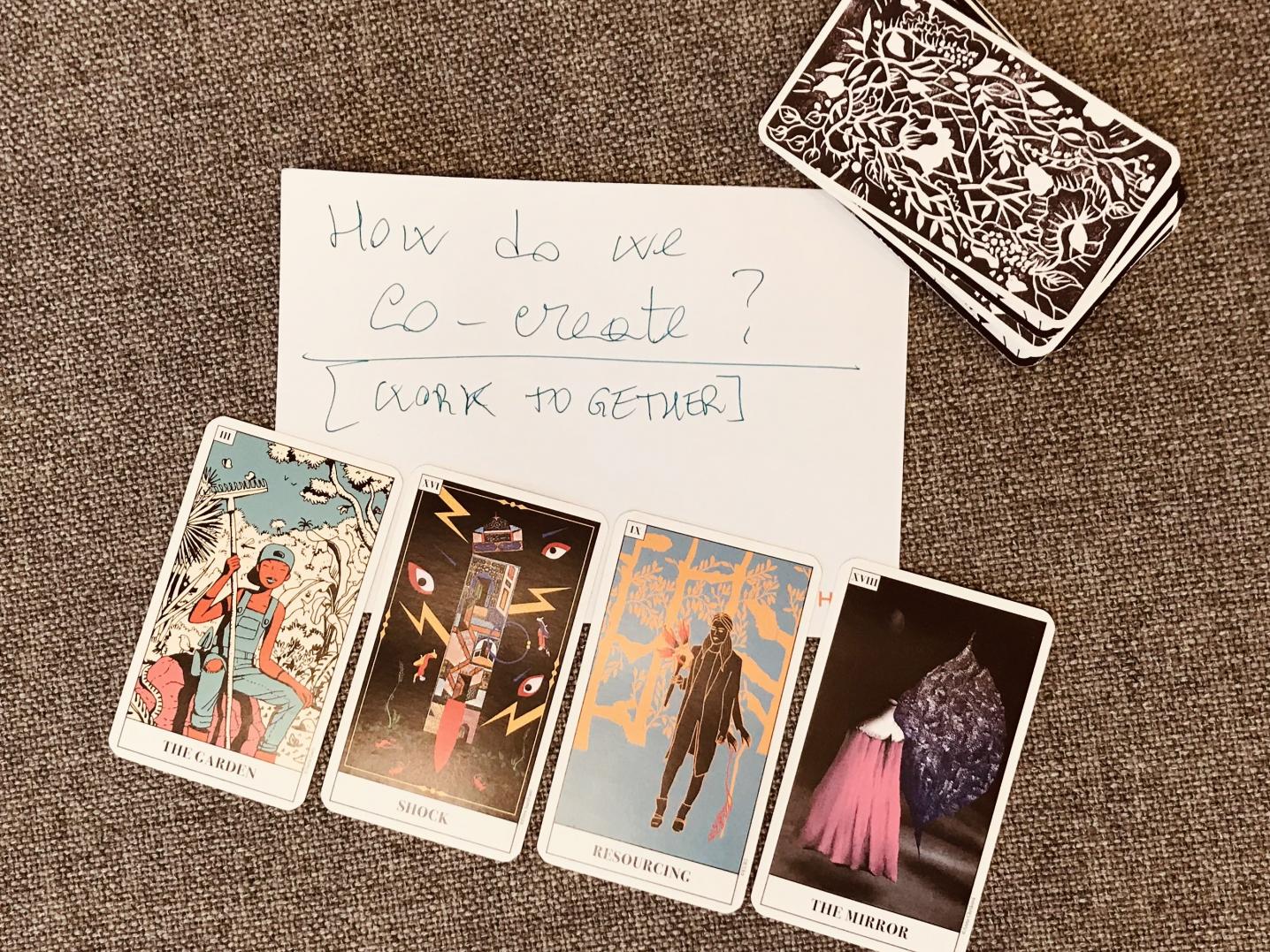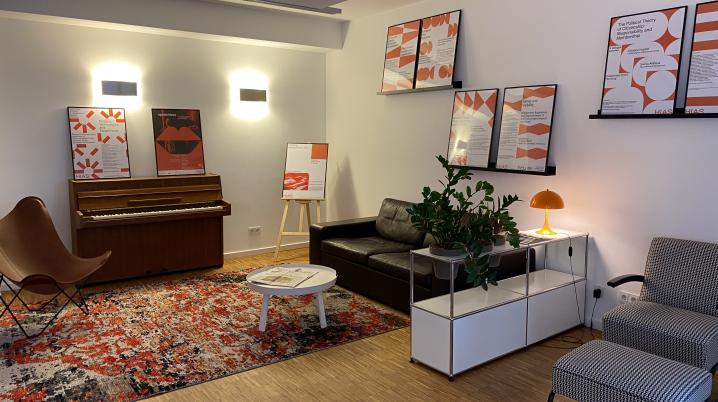
Taking the long view - a residency about residencies
Collaboration across continents and disciplines to diversify knowledge about contemporary artist residencies
Artist residencies are an important means of supporting creative work around the globe, and since 2015, they have been attracting more and more attention from scholars. So far, most of this research comes from practitioners in arts and policy circles, with a scattering of PhD projects, especially based in Europe.
The Residencies Research Group seeks ways to open up this emerging research field to internal critiques, alternative histories, and non-European perspectives by bridging theory and practice, academic disciplines and artists’ experiences. The research focuses on three themes: Contemporary challenges/Internal critiques, (Counter)histories and New trajectories, and this collaboration is made possible by the Constructive Advance Thinking (CAT) Program.
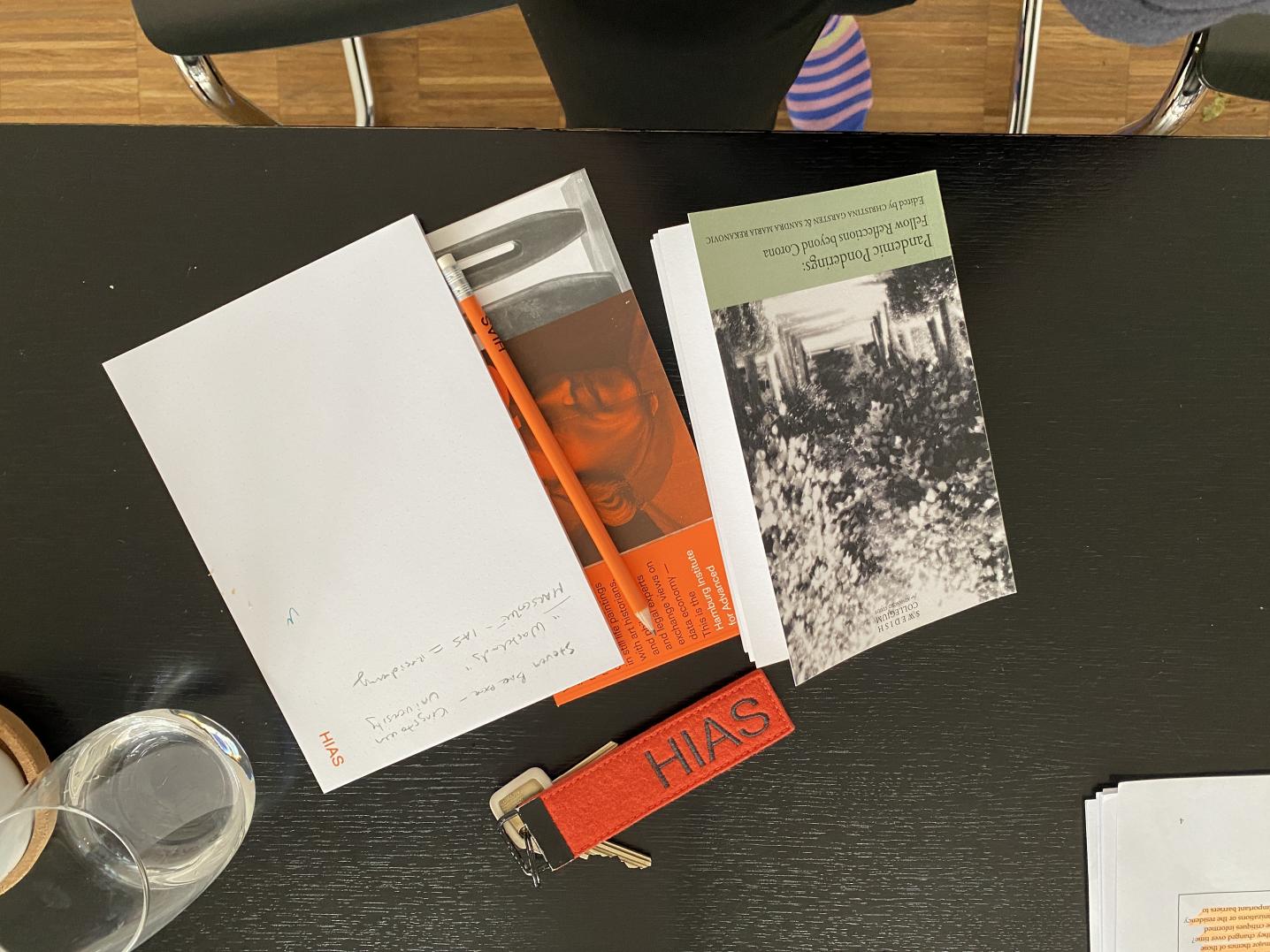
Meet the team
This collaboration is made possible by the Constructive Advance Thinking (CAT) Program, which is supporting us through a series of four research residencies over a three-year period (2023-2025). In this blog, we will share updates from the project as it develops, facilitated by the knowledges, networks, and built environments of our host institutions: Hamburg Institute of Advanced Studies (HIAS), Madrid Institute for Advanced Study (MIAS), and Montpellier Advanced Knowledge Institute on Transitions (MAK’IT).
- Kathryn Roberts (PhD) is a researcher at the University of Groningen in the Netherlands, focusing on the literature and culture of the United States.
- Bojana Panevska is a researcher and writer. Currently an advisor for residencies at DutchCulture | TransArtists and president of the board of On the Move.
- *Patricia Healy McMeans (PhD) is an artist, curator and researcher based in Minneapolis doing work around the social studio residency model, and teaches at Minneapolis College of Art and Design.
- *Miriam La Rosa (PhD) is a Sicily-born researcher and curator based in Naarm/Melbourne, exploring the impact of cross-cultural exchange in art residencies and collaborative projects.
- *Angela Serino is a curator, writer and researcher based in Amsterdam. Her work is focused on issues of time, care and ecological belonging.
- *Pau Cata (PhD) is an artist, curator and researcher based in Barcelona. He was awarded a practice-led Phd in Art at the University of Edinburgh. He has been the coordinator of CeRCCa, NACMM and Platform Harakat and is founding member of ARRC.
*These team players are also members of the ARRC study collective.
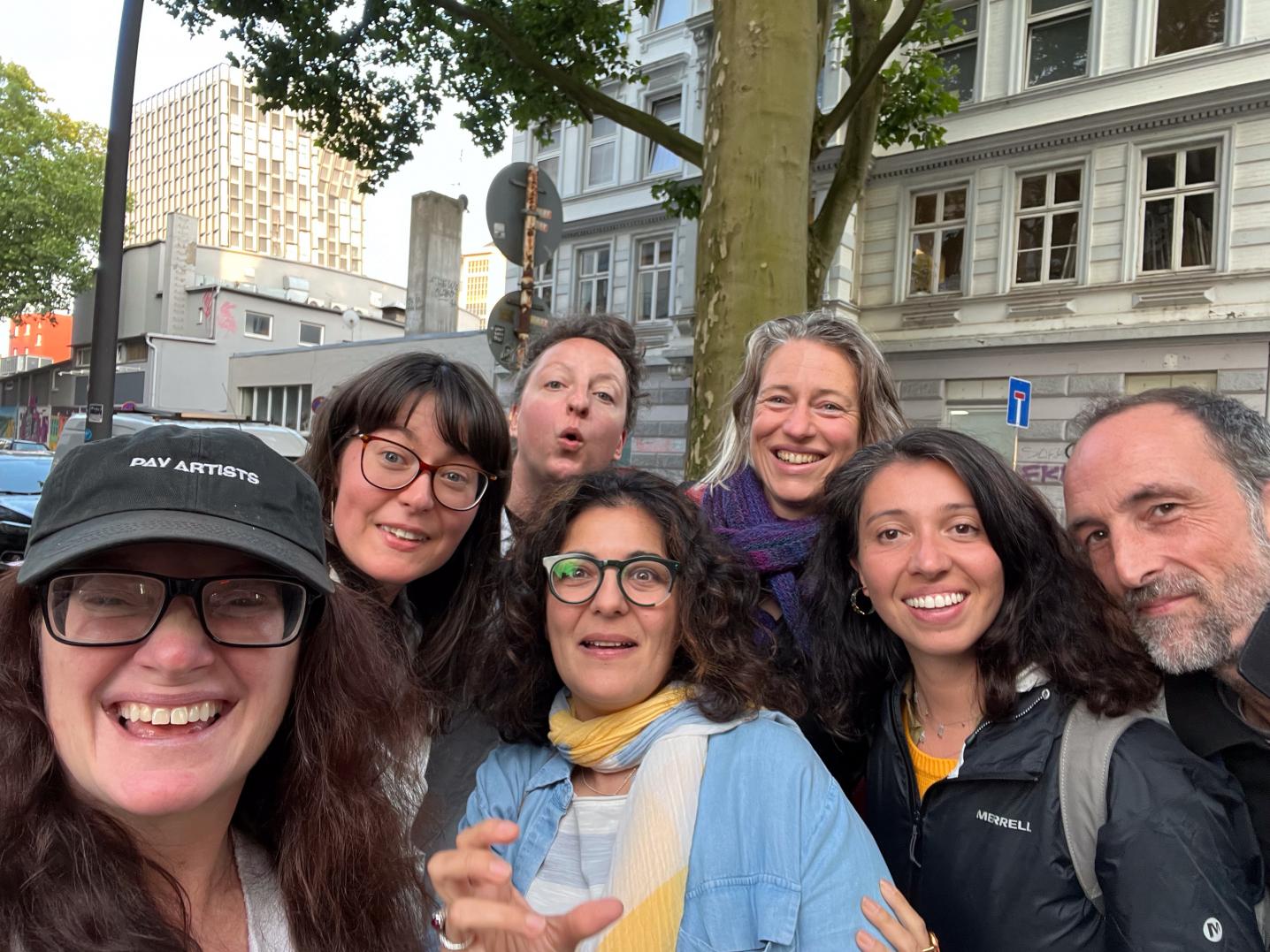
Research themes
This project brings together artists, curators, residency organisers, and academic researchers to consolidate existing knowledge in the field, make it useful for various audiences, and develop further research agendas for future use, by us and others. In our research journey, we will explore three themes:
- Contemporary challenges/Internal critiques: How have organisers and artists conceptualised the challenges facing residencies today, and how have they responded in their own practices?
- (Counter)histories: How have residencies changed over time, and what alternative histories of travel, hospitality, and exchange might inform the residencies of the future?
- New trajectories: How are residencies redefining the limitations of geo-political borders and unequal resources, and encouraging meaningful community participation?
To investigate these themes we will take into consideration our positionality as researchers—the locations from which we operate and the direction of our own practices. We will also consider the localities in which the fieldwork itself takes place. While our in-person meetings will occur in Hamburg, Madrid and Montpellier, we will especially look at those residencies that, from within a European context, are successfully engaging with the multilayered histories and contemporary practices of non-European territories as well.
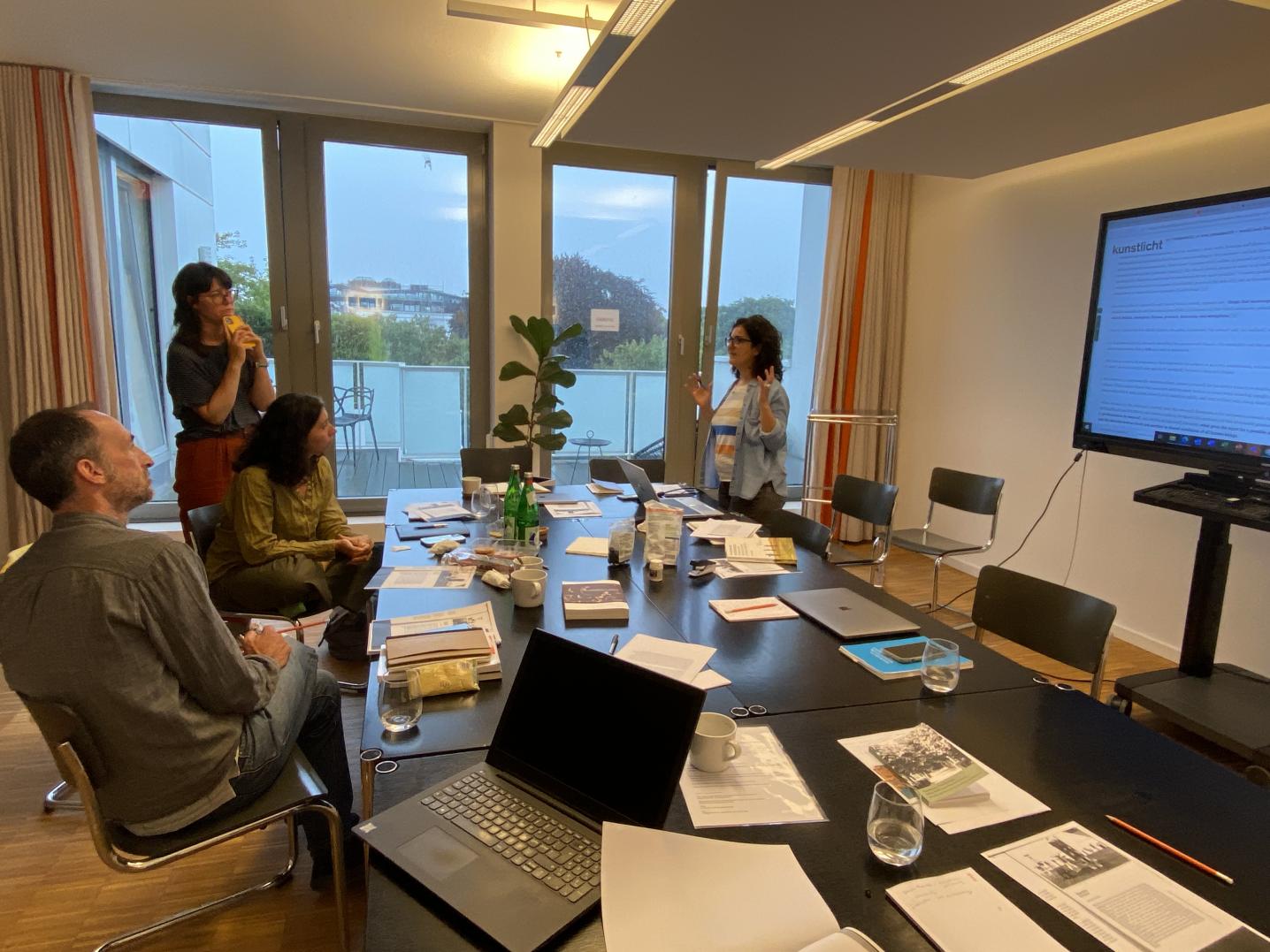
Research Residency #1. Hamburg, July 2023
Our first meeting took place at HIAS over one week in July. The group arrived at different times and from disparate locations—Kathryn from Groningen, Angela and Bojana from Amsterdam, Pau from Barcelona, Patty from Minneapolis (via Barcelona), and Miriam from Naarm/Melbourne (via Catania)—a trend that reflects the multiplicity of time zones and places we collectively inhabit. The six of us stayed together in one house in the Neustädt District for the week, commuting several kilometers to HIAS, living in and exploring the city jointly, in between our intensive research meetings. This dwelling time together created more intimate 1-1 bonds, as several of us had never met in person before.
Our guide to Hamburg was Lola Mense, who made us feel at home in the HIAS conference room, our workspace for the week, and introduced us to leaders from a variety of local arts organisations. One highlight was a dinner reception in this historic townhouse at Rothenbaumchaussee 45 that serves as homebase for the year-round HIAS fellows. Here, we had an animated discussion about everything from the Open Call system for residencies to artistic research with representatives from the University of Fine Arts Hamburg (HFBK), which hosts a number of artist-in-residence exchanges.
Art educator and curator Prof. Nora Sternfeld shared her critical view on the use of Open Calls as a procedure to select a residency’s participants. In particular, she highlighted how the traditional application process, of submitting a project proposal and CV, enhances competition amongst artists rather than fostering collaboration or the 'commoning' of resources. This type of submission requires a lot of unpaid labour for the artists, and also the jurors. Often, she argued, the number of applicants and the number of artists selected are disproportionate, with only a select few having repeated access to these programs. In contrast, other more horizontal selection processes in use somewhat today, such as common invitation, first resident helping choose the next residents, or lottery-style , have the benefit of connecting artists with host institutions without necessarily requiring a pedigree or previous connection, and by simply submitting one’s name, saves time for the artists. We acknowledged the problem of relying exclusively on the traditional Open Call process, especially at a time when the resources allocated to art and culture are dwindling. How can artists access funded residency programs beyond the current options (namely, selection via open call or direct invitation)?
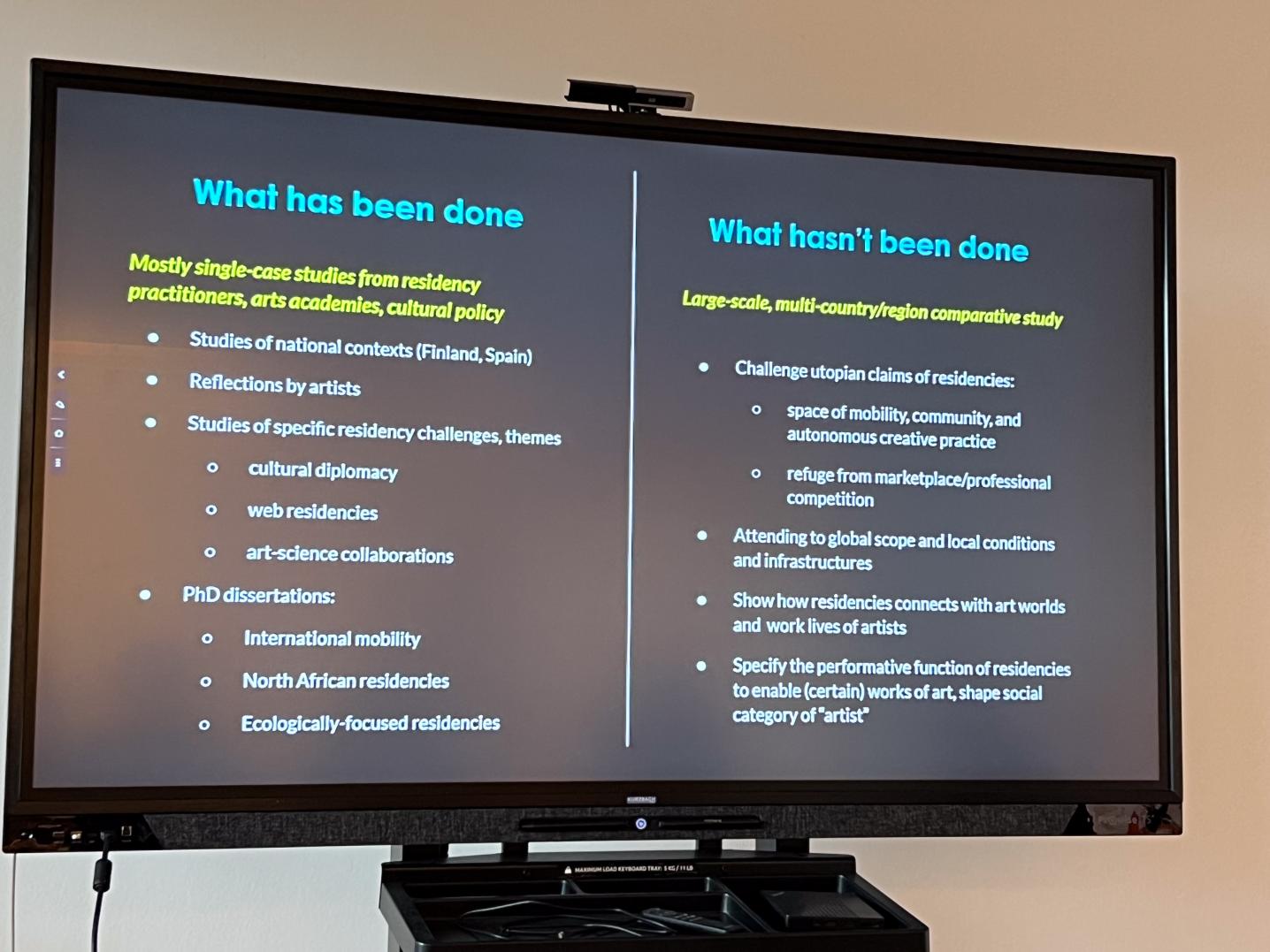
Particularly interesting for our project were the Artists-in-Residence programs at HFBK, which invite artists to embed themselves in Hamburg and the university for an extended period while they pursue their own artistic research, with a particular focus on artists at risk and artists from the Global South. Over dinner, we had an animated discussion with Stefan Aue, Artistic Research Officer, about the turn-to-”research” as a paradigm in the arts, and the turn to artistic methods in university contexts: what is motivating this convergence, and what are its pitfalls as well as its promises? Moreover, when resources for arts and culture are so unequally distributed across the world, how can exchange programs foster mutual learning and transformation, rather than one-directional patronage?
On our final day in Hamburg, with the help of Eike Pockrandt (International Cooperations at HFBK), we wandered over to Karolinenstraße, between St. Pauli and the Schanzenviertel, for a studio visit with resident artist Nelson Ijakaa Imo. Surrounded by Nelson’s paintings in the spacious ground floor studio, the conversation ranged from the complex cultural politics of Nairobi (where Nelson developed his practice) and his new home in Tanzania, to the pitfalls of accepting European funding, to the successes of the Savannah Centre for Contemporary Art (SCCA) in Tamale, Ghana, a residency, exhibition, and research hub launched by international artist Ibrahim Mahama. Nelson’s deep interest in what the residency format can (and can’t) do for contemporary art in Tanzania resonates deeply with the questions we have been asking in this research project; we look forward to conducting a series of follow-up interviews with Nelson and the other HFBK resident artists. Stay tuned for more on this later in the year!
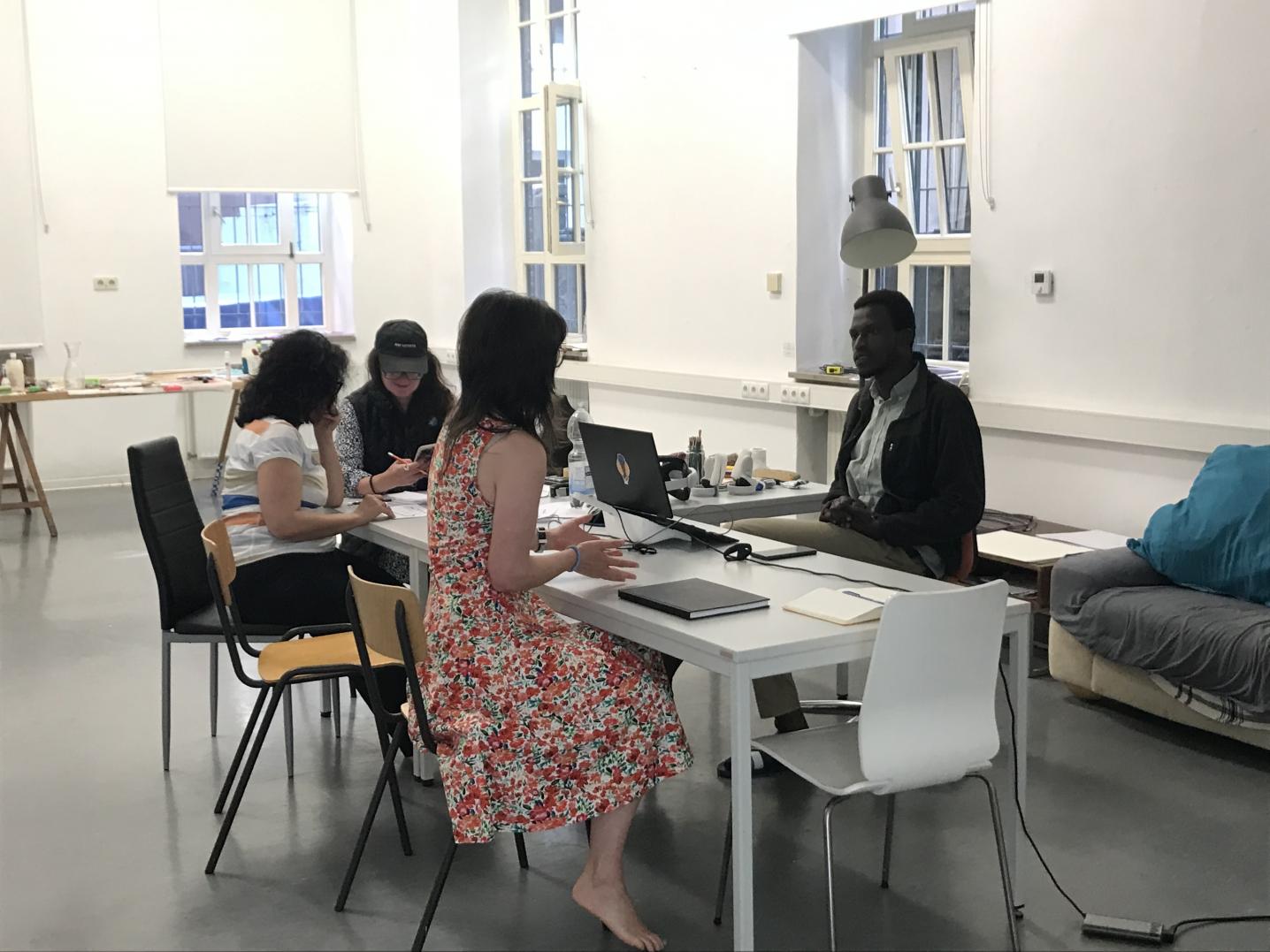
What’s Next?
As we deepen the knowledge exchange with our contacts from Hamburg, we are also looking forward to our next in-person research residency in Madrid in the fall of 2024.
In our next post, we’ll highlight some of our collaborative methodologies within the group, focusing on the main question that occupied us in our week in Hamburg: how are we going to work together, to co-create this research project over three years? We’ll share how we used a bespoke Tarot deck to develop a common ground for collective work, and how you might adapt this method to your own organisation or team, in our forthcoming post.
